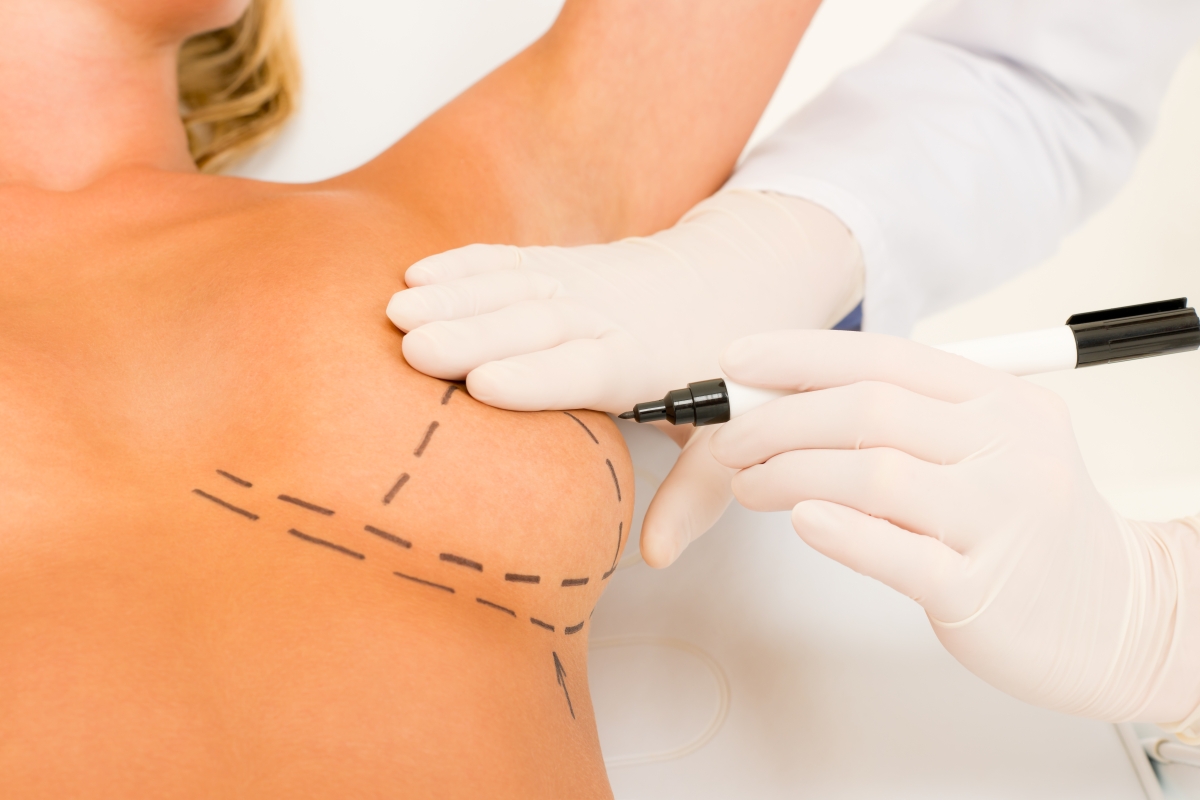Types of Surgery For Breast Augmentation in Delhi
from web site
Breast augmentation procedure includes using silicone implants or fat grafting to increase the size and shape of the breasts. For women who are not satisfied with their breast’s appearance, Dr. Ashok Tandon, MS Plastic Surgery in Delhi is happy to help them achieve more shapely, equally sized, and symmetrical breasts.

Types of Surgery For Breast Augmentation in Delhi
There are three types of conventional incisions for the introduction of the breast implant: axillary (armpit), periareolar (areola) or inframammary (breast fold).
Surgical incision and positioning of the breast implant
Transaxillary (axillary hollow – armpit)
Absence of scar on the breast.
Endoscopy Technique – Endoscopy involves introducing a small camera through a small incision that transmits the enlarged image to a monitor, which allows the surgical technique to be performed accurately and thus reduce the risk of possible complications.
- Technique used for the majority of the patients
- Reduced risk of infection
- Reduced risk of excessive bleeding
- 2.5 cm scar at the level of the axillary hollows (little or no apparent)
- Ability to start massages in the first days after surgery
- Reduced risk of loss of nipple sensitivity (direct visualization of the nerves)
- Breastfeeding possible after surgery
- In case of complications, such as: hematoma, rupture, or displacement of the breast implants, it is always possible by endoscopy to treat the complications by the same scar in the armpit.
- The spacing of the breasts is directly related to the insertion of the pectoral muscle on the ribs. Therefore, after the breast augmentation, the distance between the breasts will be the same as before the surgery, regardless of the insertion site (axillary, inframammary or periareolar). However, when the implants are placed behind the mammary gland, the spacing of the breasts can be decreased
Warning! The technique with armpit incision without the endoscopy camera is not recommended, as there is an increased risk of bleeding, mispositioning of breast implants and loss of sensitivity.
Periareolar (around the areola)
Non-endoscopic technique.
- Technique that may be associated with mastopexy
- Scar may be visible in some patients
- Increased risk of excessive bleeding and loss of nipple sensitivity due to poor visualization of nerves
- Increased risk of infection due to passage through the mammary gland
- Possibility of anomaly in mammography due to cicatricial sequelae of the mammary gland
- Difficulty with breastfeeding
Inframammary (lower breast fold)
Non-endoscopic technique.
- Increased risk of infection
- Increased risk of surgical field contamination by the surgeon during surgery
- Increased risk of loss of nipple sensitivity due to poor visualization of the nerves
- Increased risk of excessive bleeding
- Scar may be visible
- Possibility of poor positioning of the scar due to the descent and positioning of the breast implant
- Difficulty with breastfeeding
The location of breast implants
Whether sub-muscular, sub-glandular or muscular sub-fascia, check out the pros and cons of implant placement choices.
Submuscular
For patients with a volume AA / A or B-
- Better recovery after the procedure of breast implant in Delhi
- Natural aspect
- Lower risk of palpating folds of breast implants
- Ideal for patients with low mammary glands
- Better visualization of mammary tissue at mammography
- Breastfeeding possible
Disadvantages:
- Patient more suffering
- Increased risk of lateral displacement of implants
- Possible deformation of the breasts when there is a contraction of the pectoral muscle
- Does not change the gap between breasts (the difference remains the same before / after surgery)
Subglandular
For patients with a large amount of breast tissue (volume B + or C).
Advantages:
- Patient less suffering
- Can improve the gap between the breasts
- Absence of deformation of the breasts during contracture of the pectoral muscles
- Reduced risk of displacement of implants
Disadvantages:
- Non-natural appearance of breast in the long term
- Decreased visualization of mammary tissue at mammography
- Higher risk of palpating breast implant folds
- Impossibility of breast lift (mastopexy) in the future
- Possibility of increasing the risk of contracture of the fibrous capsule
- Difficulty with breastfeeding
Muscular subfascia (novelty)
For patients with a large amount of breast tissue (volume B + or C).
Same advantages and disadvantages as the subglandular technique, but may be more natural, because the muscular fascia could camouflage the contour of the breast implant.
Once the plastic surgeon in Delhi has made the incision, it is to prepare the cavity to receive the breast implant using specific surgical instruments. The breast implant with unfilled physiological saline is inserted and positioned, either under the mammary gland or under the pectoral muscle. Once in place, the breast implant is then filled with physiological saline (by aseptic transfer) to obtain the desired volume. The procedure lasts an average of one and a half hours and is performed under general anaesthesia. Convalescence for endoscopic breast augmentation is approximately one week.
ENDOSCOPY
The ultimate dream of the plastic surgeon in Rohini would be to see disappear under his eyes with a single magic wand any surgical trace or scar. For now, this aspiration is partly satisfied by endoscopy.
The basic principle of endoscopy is to make an incision of a few millimetres to insert the instruments and a tiny camera that transmits on the monitor the enlarged image of the internal structures of the body. The surgeon thus directly visualizes the work he does without having to make a large incision for direct vision.
Some plastic surgeon in Pitampura refuse the technological advancement of endoscopic surgery for lack of scientific knowledge or for financial reasons since this technique requires a large investment and high maintenance costs.
